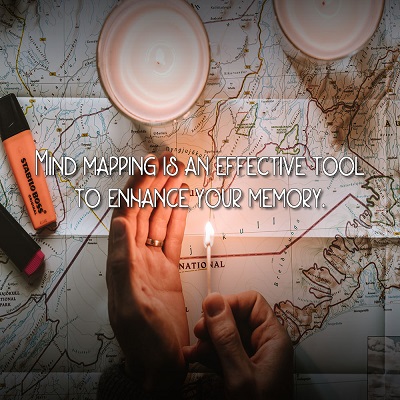 The human brain is powerful. Made up of at least a billion brain cells, the brain makes it possible for us to perform tasks, solve problems, use language, and store memories.
The human brain is powerful. Made up of at least a billion brain cells, the brain makes it possible for us to perform tasks, solve problems, use language, and store memories.
So how does the brain, with its billion brain cells, make sense of the massive amounts of information we have to process and retain? Simple. It makes connections.
The ability of the brain to connect one idea to another idea is the basis of the memorization technique called mind maps. The idea of using mind maps to improve memory and cognition started in the 1960s. English author Tony Buzan created mind maps as a thinking tool after studying how our brain works. He claims that mind maps are inspired by the great thinkers in history, such as Leonardo da Vinci and Albert Einstein.
Mind-mapping has been popular ever since its conception and for good reason. Using mind maps to enhance memory and productive thinking has proven effective by the numerous studies that made use of this technique.
How Does a Mind Map Work?
Mind mapping is a visual representation tool that helps us easily understand and retain information through the use of connection and association. This technique mimics how our mind works. Your brain connects new information to a related idea that you already know. A mind map makes the connection and association more concrete and visual.
You can start with a central idea that you want to remember easily. Then you can start linking other relevant ideas to it. Afterward, you can add more ideas relevant to the other ideas. Let the concepts and ideas branch out by adding more ideas that are related to one another. You can associate the central idea to a single word, an image, or symbols for it to be more easily understood and retained.
Avoid using long and wordy phrases in your mind maps, as these can make it more difficult for you to retain the information. Keep words short and clear, as these are more effective in memory retention.
Buzan recommends the use of colors in mind mapping because bright hues are known to aid in retention. Colors are also useful for mental processing and image storage. Colors also help in isolating more pertinent details from the rest. This is referred to as the isolation effect, wherein your brain easily remembers something that stands out from its surroundings.
You can use different colored markers for each association or connection you make to the central idea to make your mind map more effective.
What are the Benefits of Using Mind Maps?
When conceptualizing the mind map, Buzan discovered that the mind does not work linearly. Lists and outlines are more difficult for the mind to understand and remember, simply because that’s not how our brain works. Buzan further went on to say that linear thinking limits how we think and limits our creativity.
Mind maps, on the other hand, are not linear; therefore, it is much easier for us to retain information gained this way. The associations and connections we made to the central idea allow us to have a mental tag that we can come back to when we need to remember the central concept.
Aside from memory retention, mind maps are also beneficial in other ways. Because of its non-linear format, we can structure our ideas more freely but still allow them to be comprehensible and easy to digest.
Mind maps can also make us more productive because we can learn new information more quickly and effectively. Planning projects with a team can be done easier with maps as it allows team members to brainstorm and sort out ideas and concepts in a more efficient manner.
Also, the act of creating mind maps makes us more creative and can help us produce a unique piece of work. According to a study done in 2004, ten out of twelve students who used mind maps before doing their writing assignments significantly improved their output. Creating mind maps is also one of the techniques many writers use in overcoming their writer’s block.
Summary
Our mind is a powerhouse, and mind maps help us make sense of all the information we store in it. Mind maps make it easier for us to retain information by making mental connections with other relevant ideas. We can also take advantage of mind maps’ other benefits, such as helping us become more efficient, productive, and creative.






